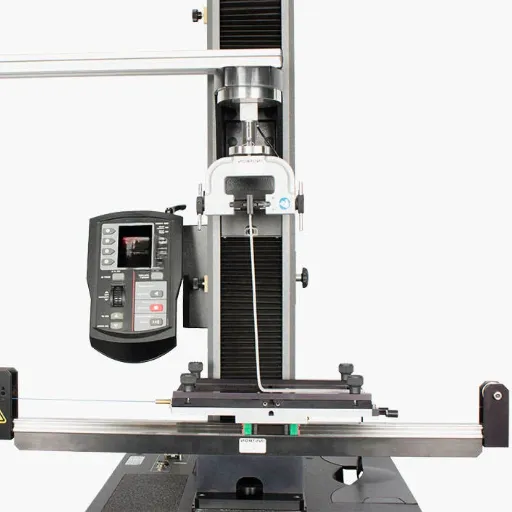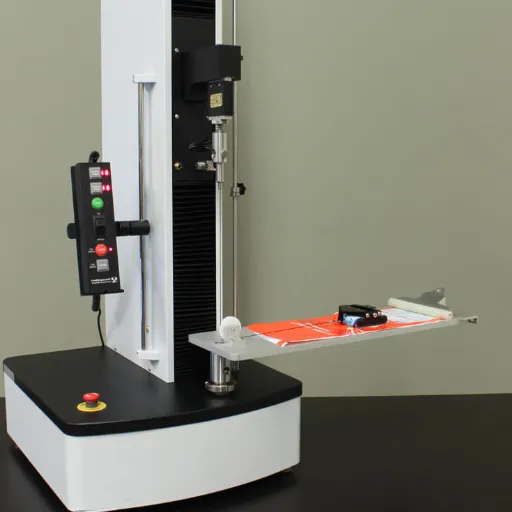Friction and wear act as influences upon the performance, potential for failure, and efficiency of mechanical components, and these act differently from one industry to another. From automotive engine parts to various manufacturing equipment processes, it is necessary to know how the material behaves with repeated motions and alternate stress applications for technology development and reliability. In this blog, the article undertakes the task of looking at reciprocating wear test machines, of utmost importance to perform friction-wear experiments under nearly real conditions. You will learn how these machines operate and their significance for actual applications, and material science and industrial processes would be advanced because of their existence. This would aid you in understanding in greater depth friction testing methods and how they help in material development, becoming even more of an interest to engineers, researchers, or those at the industrial level.
Introduction to Reciprocating Wear Test Machine
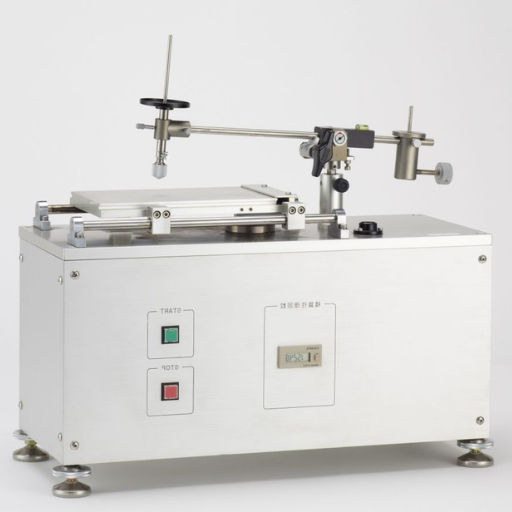
The reciprocating wear test machine is used to determine wear properties of materials during sliding contact. It uses the reciprocating motion whereby sample and counterface are maintained in relative motion with each other through a specified load. It measures precise wear rates, friction coefficients, and durability of the materials. Such tests are essential in automotive, aerospace, and industrial sector research, where knowledge about material behavior is necessary for the processing of components that are subjected to repeated mechanical stress. The controlled environment of the machine guarantees that these test results are repeatable and reliable, thus making it an excellent tool for characterizing materials.
What is a Wear Test Machine?
Wear test machines are specialized machines that test wear resistance and durability of materials under various controlled conditions. These machines simulate situations where the test specimens may be subjected to certain forces, loads, and motions in varying possibilities such as sliding, rolling, or abrasive actions. Wear test machines will in general, measure parameters such as friction coefficient, material loss, and wear rate to assess the performance of the material in the long run. In recent opportunities, wear test machines have now been improved to comprise more sensors and data acquisition systems for the purpose of highly accurate real-time measurements of wear behavior. The automotive, aerospace, and medical manufacturing sectors go for these machines to guarantee the reliability and long life of components which makes it an essential tool in material science and engineering.
Importance of Friction and Wear Testing
This friction and wear testing procedure is of utmost importance for its ability to test the lengthened durations of resistance and stresses a material is subjected to during application in real life. By analyzing such materials, it simulates the actual operational conditions to obtain abrasive response, adhesive response, and fatigue. These tests undoubtedly provide safer and better designs in critical industries such as automotive, aerospace, and biomedical sector. If a friction-wear test yields valuable data, it will compel decisions on selecting one material over another, hence reducing repair and maintenance costs; in effect, it adds to the longevity of the product. All of this has a direct impact on the levels of performance, to which a product shall be built, and lastly, it affects its operational efficiency.
Overview of Reciprocating Wear Test Machines
Reciprocating wear testing machines are precision instruments to examine the resistance to wear, friction, and durability of materials. These test machines exert linear back and forth movement, which simulates the stresses operational materials are exposed to in various applications like engine components, medical implants, or industrial machinery. The latest models present automated load control, temperature control, and data acquisition systems, thus ensuring stringent control of test parameters and repeatability of all tests.
According to the recent scenario, the counterpart of real-time data acquisition and monitoring is considered a key advancement to this breed of testing machine, where the performance parameters can be obtained on-the-fly, during the entire duration of as well as between repetitive cycles of the test procedure. For example, the feedback of sensors would be utilized dynamically and simultaneously to track the change in coefficient of friction, surface wear, or even the onset of subsurface fatigue during the testing. This fine level of detail further allows engineers to tune materials for their high-end applications toward enhanced reliability and reduction of maintenance costs. Hence, reciprocating wear testing machines are still one of the utmost important tools in the domain of materials science to bridge newer technologies with manufacturing standards across various industries.
Functionality of Reciprocating Wear Testers

Reciprocating wear testers reproduce the repetitive motions and contact conditions acting on materials in real-life applications. A specimen is mounted stationary on the machine and is rubbed by a moving counterface under controlled load, speed, and environmental conditions. Some of the key functions of the device are designing the tests with specific values of normal load, stroke length, oscillation frequency, and test duration. Further, the data acquisition system integrated with the tester would allow real-time monitoring of frictional force, wear rates, and material degradation. Such extensive functionality emphasizes why reciprocating wear testers are used for testing the tribological behavior and the resilience of materials, helping the engineer to predict and enhance material behavior during heavy-duty applications.
How Reciprocation Works in Testing
Reciprocation for wear testing is a simple-to-understand concept in which the opposing surfaces slide against each other in a linear reciprocating motion under set and controlled test conditions to simulate the working of real-world wear mechanisms. The sliding or oscillation is more typical of mechanical parts such as those in bearings, pistons, or joints. The reciprocal testing motions will be carefully controlled for applied load, stroke length, reciprocating frequency, and environment factors (for instance, temperature or lubrication) to ensure the results are reproducible, accurate, and dependable. Sliding against each other cyclically will allow wear rate determination and friction coefficient from surface damage to material fatigue, depending on the time. This testing technique is indispensable in understanding the tribology of a given material and thus gives the engineer the ability to further tweak the parameterized design and material choice for better performance and durability under actual working conditions.
Key Components of a Wear Testing Machine
-
Load Application SystemApplies relative and adjustable amounts of load to the specimen so as to reproduce the working pressures for reference.
-
Reciprocating or Rotational MechanismProvides cyclic or continuous motion keeping in view the movements and vibrations which cause wear.
-
Test Specimen HolderHolds the test material in position during the test so that particular areas or surfaces are tested.
-
Counterface MaterialThe material that comes into contact with the test specimen and simulates the actual contact conditions.
-
Friction SensorA sensor that measures the coefficient of friction between the two surfaces in contact.
-
Wear Measuring UnitMeasures the wear loss in the material either through contact profilometer or non-contact profilometer.
-
Environment Control ChamberAn environment control chamber supports testing in different environmental conditions such as humidity control, temperature, or the presence of lubricants or contaminants.
-
Data Acquisition SystemIt records the data corresponding to different important parameters like load, displacement, number of cycles, and frictional force, etc., for analysis after completion the test.
-
Drive SystemIt provides mechanical power to impart motion to wear testing machines. It usually consists of motors with adjustable speed and torque values.
-
Control UnitThis manages the parameters and settings applied during the test ensuring repeatability and validity of results.
Each of these components plays a vital role in guaranteeing precise and reliable wear testing results.
Types of Tests Conducted
Reciprocating wear test machines are used to conduct tests such as sliding wear, fretting wear, abrasion, and adhesion tests.
| Test Type | Objective | Key Points | Parameters |
|---|---|---|---|
| Sliding Wear | Assess wear due to relative motion | Friction | Load, Speed |
| Fretting Wear | Analyze damage under oscillatory motion | Cycles | Stroke, Hz |
| Abrasion | Measure material loss from solid particles | Hardness | Depth, Force |
| Adhesion | Evaluate bonding strength between surfaces | Stick | Load, Motion |
Applications of Reciprocating Wear Test Machines
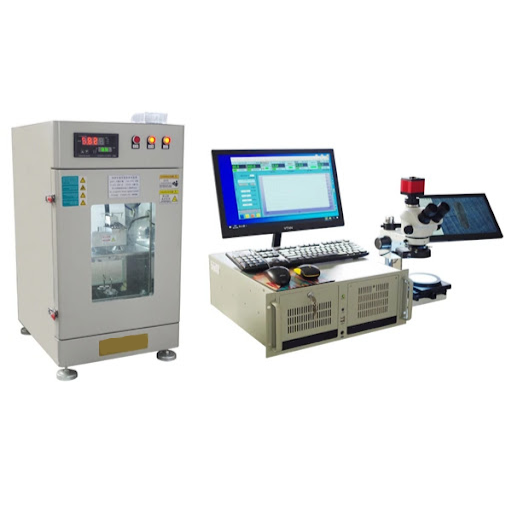
Reciprocating wear test machines find extensive usage in materials science and engineering to judge the performance and wear of materials under differing conditions. The reciprocating wear test machines test wear resistance, friction operation, and material compatibility and are deemed essential in automotive, aerospace, and manufacturing industries. They contribute to quality control, material selection, and the development of antiwear coatings or surface treatments, which in turn improve the durability and efficiency of components that undergo reciprocal contact or oscillatory motion.
Industries Utilizing Wear Testing Machines
Wear testing machines are broadly used across multiple high-performance industries in order to evaluate the quality of components and their durability. In the automotive sector in particular, these wear testing machines help verify the wear resistance of materials applied in engines, brakes, and transmission systems that keep critical parts alive under strenuous conditions. Wear testing is also applied in the aerospace field, where materials and coatings for aircraft components are put to the test, as there is simply no room for failure given the stringent performance and safety requirements. The manufacturing sector, on the other hand, applies these testing mechanisms in the optimization of tooling and machinery parts to ensure increased production efficiency as well as cost savings on downtime. These applications stand as a testimony to the need for wear testing in sectors having an inherent need for accuracy and reliability.
Automotive and Aerospace Applications
Reciprocating wear test machines of paramount importance in automotive and aerospace industries should be valid to test the durability and reliability of components under extreme operational conditions. These reciprocating wear test machines help test wear resistance under automotive applications for engine parts, brake systems, and transmission components and optimize materials to sustain high stresses and minimize friction losses. Likewise, reciprocating wear tests are used in the aerospace industry for the assessment of performance in coatings and materials in jet engines, landing gears, and turbine components. This allows engineers to select materials that stand high-temperature environments and pressure variation while satisfying safety and efficiency standards. These tests of utmost precision lead to improved longevity of parts, reduce maintenance, and keep them within stringent regulatory standards.
Role in Material Development and Research
- Material Selection and Screening: Reciprocating wear test machines are critical in testing different materials in a controlled environment for assessing their wear resistance and suitability for industrial applications.
- Enhancing Durability: Simulating real wear conditions, this torturing is conducted to measure materials that stand high durability and longevity for better performance in harsh environments.
- Coating Performance Analysis: Assist in the complete evaluation of a surface coating so engineers can assess coatings in terms of friction reduction and wear. This aids in the development of new protective coatings.
- Assessing Tribological Properties: These machines measure and analyze reciprocating wear behavior that comprises coefficient of friction, wear rate, material compatibility, and tribological properties in different loads, and working environment, of materials.
- Establishment of Input Data of Computational Models: The test data obtained from these tests are very helpful in creating and researching computational models that predict the performance of materials and ensure efficient design of materials and systems.
Benefits of Using Reciprocating Wear Test Machines
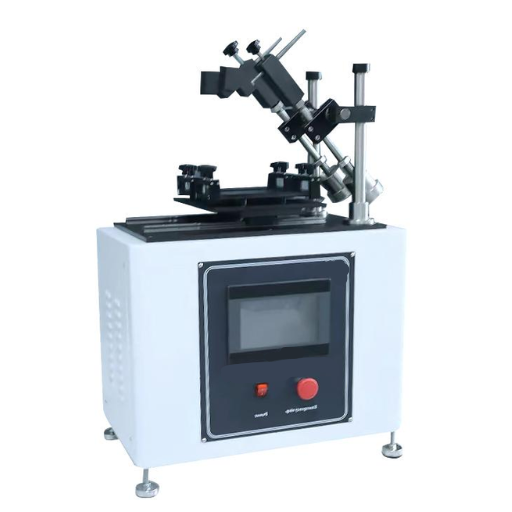
Accuracy in Friction and Wear Measurements
Measurement accuracy of wear and friction is paramount to the evaluation of material performance in specified conditions. In this regard, high-precision reciprocating wear testing machines measure friction coefficients, depth of wear, or loss of material with high precision, employing calibrated sensors and advanced data acquisition systems. These high-precision devices further operate under controlled environmental conditions, thus ensuring that the results obtained are repeated and reliable. Moreover, the latest developments in sensor technology and the implementation of dispute-independent ASTM and ISO standards guarantee even more accuracy in measurement that can confidently remark upon the character of materials in industrial and research applications.
Improving Material Performance
In reciprocating wear test machines, great benefits can be reaped in improving materials’ performance. On the one hand, these machines put me through the grind of simulating actual wear conditions and thus provide crucial insights into the performance and durability of materials under a wide range of loads and motions. They help me select the proper material by systematically studying the wear characteristics such as friction, wear rate, and material degradation. On the other hand, being internationally standardized and respectably compliant with the recognized standards like ASTM and ISO makes sure that the data obtained is reliable and quite applicable in industries. Through these machines, I can build better maintenance predictions that inhibit the failure of materials and thus become one of the key contributors to improved materials for different applications.
Cost-Effectiveness in Testing
In regard to materials testing, cost-effectiveness is enhanced greatly by advances in testing machines and optimization of testing protocols. Testing machines of the modern generation are designed to reduce material utilization and power consumption and to complete the testing cycle faster than conventional ones without any loss in precision. Based on this accurate data for wear and for material degradation, predictive maintenance strategies will reduce massively the downtime and its associated costs. Integrating systems for automation and binding to standard industry frameworks like ASTM and ISO should go a long way toward streamlining their processes and thus ensuring cost effectiveness along with quality outcomes.
Recent Advancements in Tribology and Testing Machines
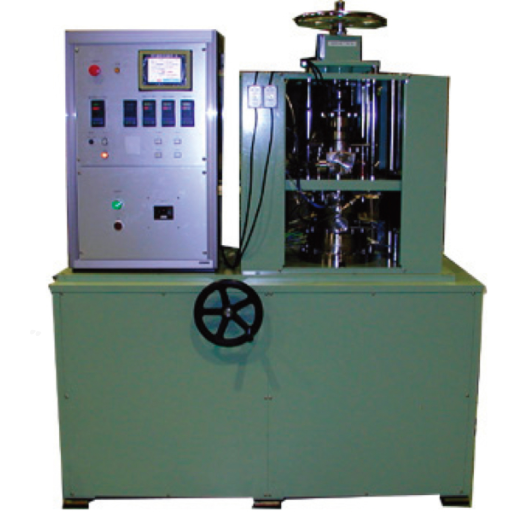
In these days, advancements in the field of tribology and testing machines focus on the precision, efficiency, and sustainability involved in material testing and wear analysis. Wear testing has changed with electronic sensors of high resolution, real-time data acquisition, and AI-based analytics. These new technologies facilitate precision in modeling frictional forces and wear behaviors under different ambient conditions with minimal human interference. The evolution of modern modular testing systems containing various components based on requirements increases the versatility for testing of various materials. Further, these advanced systems are very helpful in maintaining standards according to international standards and also in maximizing the reliability and repeatability of the testing method applied.
High-Frequency Reciprocating Test Methods
High-frequency reciprocating test methods (HFRR) are common methods to evaluate the tribological properties of materials under precisely controlled conditions. These methods utilize reciprocating motion to simulate real contact situations, usually at high speeds and loads sometimes varying. Coupled with cutting-edge data-analytics techniques-of which Google Trends and academic research studies form an important part-the HFRR methods have been improved to predict wear patterns and friction coefficients with much higher accuracy. Dynamic data insights hence drive experimental testing protocols to focus better on emerging industrial needs and improve the predictive capability of performance assessment. Thus, the merger of advanced data sources with HFRR methods stands for the state-of-the-art in performance evaluation of materials.
Integration of On-Line Wear Monitoring
On-line wear monitoring system integration combines advanced sensor technology with real-time data analytics to monitor wear progression during processes. This system primarily uses acoustic emission monitoring, vibration analysis, and optical sensor techniques to capture minimal changes in material performance. On-line wear monitoring continuously provides feedback and allows the early identification of failures, thereby minimizing downtime and optimizing maintenance schedules. It works toward more exact assessments of wear patterns by lowering operational costs and building a predictive maintenance framework based on modern industrial standards of efficiency and reliability.
Future Trends in Wear Testing Technology
Wear testing technology is increasingly developing on the platform of digital tools, automation, and the Internet of Things (IoT). Other trends include AI-based predictive algorithms to analyze wear information in real time to accurately predict life of components; nanotechnology is another critical research arena, promising the development of coating materials and testing techniques that study wear at a molecular level for much greater precision; automated systems with machine learning reduce human error and increase testing speed for consistent results to traceability; remote monitoring through IoT-enabled devices, which allow uninterrupted data collection and data dispatch, renders wear testing adaptable to diversified industrial settings. These developments strive for improvements in wear testing accuracy, maintenance coordination, and green industrial practices.
Reference Sources
-
Reciprocating sliding friction and wear test apparatus – Discusses a testing system with a wide range of test speeds and loads, focusing on dynamic coefficient and wear measurement.
-
Development and use of ASTM standards for wear testing – Explores ASTM standards for wear testing and sources of data variability, including machine and operator factors.
-
Laboratory abrasive wear tests: investigation of test methods and alloy correlation – Examines test methods and the transformation of laboratory equipment into precision wear test apparatus.
-
Review on friction and wear test rigs: An overview on the state of the art in tyre tread friction evaluation – Provides an overview of friction and wear test rigs, focusing on friction evaluation at the tread interface.
- Top reciprocating wear test machine in China

